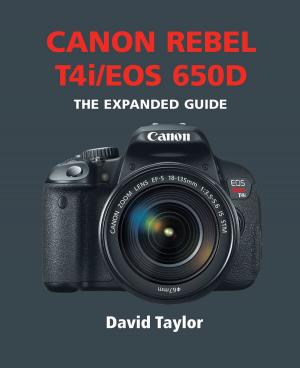| Author: | Jon Sparks | ISBN: | 9781781451120 |
| Publisher: | Ammonite Press | Publication: | April 1, 2015 |
| Imprint: | Ammonite Press | Language: | English |
| Author: | Jon Sparks |
| ISBN: | 9781781451120 |
| Publisher: | Ammonite Press |
| Publication: | April 1, 2015 |
| Imprint: | Ammonite Press |
| Language: | English |
From the front it resembles an oversized Nikon FM, the mechanically operated, interchangeable lens, 35mm SLR that was produced between 1977 and 1982. In addition to the styling and external controls, the Df's other reference to Nikon's history is the retractable meter coupling tab, which allows the use of pre-1977 non-AI lenses. Much of what lies is beneath the Df's decidedly retro skin, however, will be quite familiar to current users of modern digital SLRs. While the "D" in the name stands for "digital," the "f" stands for "fusion," referring to the marriage of old and new. Despite its pretensions of being a fully manual camera, the Df also features front and rear electronic control dials in addition to the physical dials on the top-plate. The Df is built around the 16MP full frame sensor from the company's flagship D4, and uses the processor and AF system from the cheaper D610 model. The optical viewfinder is very large; the magnification is 0.70x and the coverage 100%. When a DX lens is attached to the Df, the viewfinder shows frame-lines indicating the DX image area. Most notably, and unusual for a modern DSLR, although the camera is based on a video-capable sensor, the Df cannot shoot video. This, according to the developers, is because the Nikon Df is intended to be a serious camera for people who want to produce "pure" photography.
From the front it resembles an oversized Nikon FM, the mechanically operated, interchangeable lens, 35mm SLR that was produced between 1977 and 1982. In addition to the styling and external controls, the Df's other reference to Nikon's history is the retractable meter coupling tab, which allows the use of pre-1977 non-AI lenses. Much of what lies is beneath the Df's decidedly retro skin, however, will be quite familiar to current users of modern digital SLRs. While the "D" in the name stands for "digital," the "f" stands for "fusion," referring to the marriage of old and new. Despite its pretensions of being a fully manual camera, the Df also features front and rear electronic control dials in addition to the physical dials on the top-plate. The Df is built around the 16MP full frame sensor from the company's flagship D4, and uses the processor and AF system from the cheaper D610 model. The optical viewfinder is very large; the magnification is 0.70x and the coverage 100%. When a DX lens is attached to the Df, the viewfinder shows frame-lines indicating the DX image area. Most notably, and unusual for a modern DSLR, although the camera is based on a video-capable sensor, the Df cannot shoot video. This, according to the developers, is because the Nikon Df is intended to be a serious camera for people who want to produce "pure" photography.















